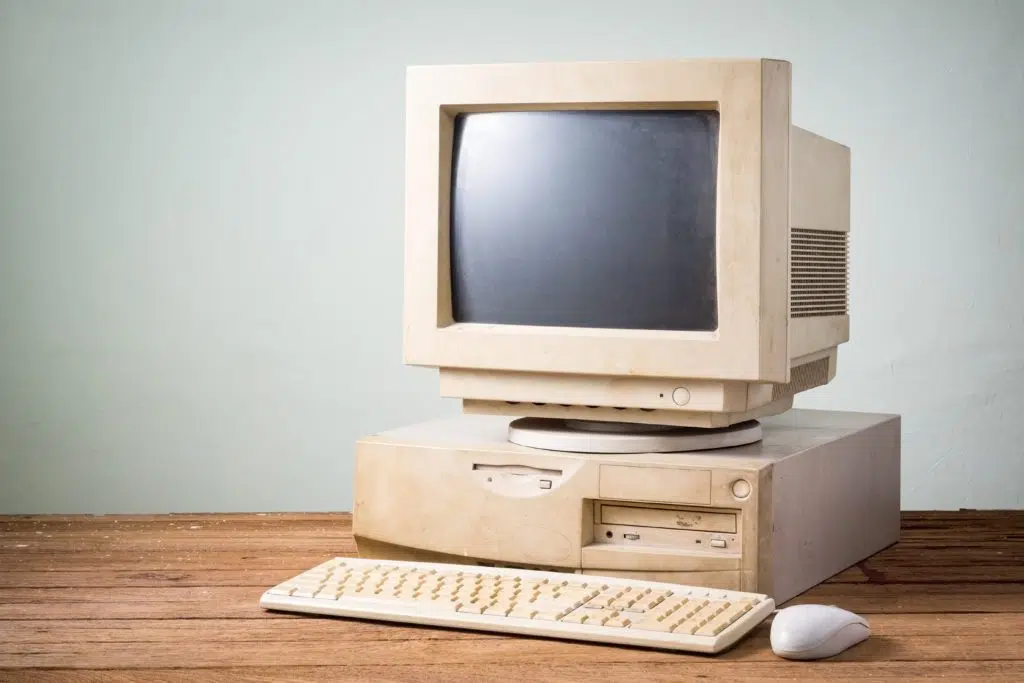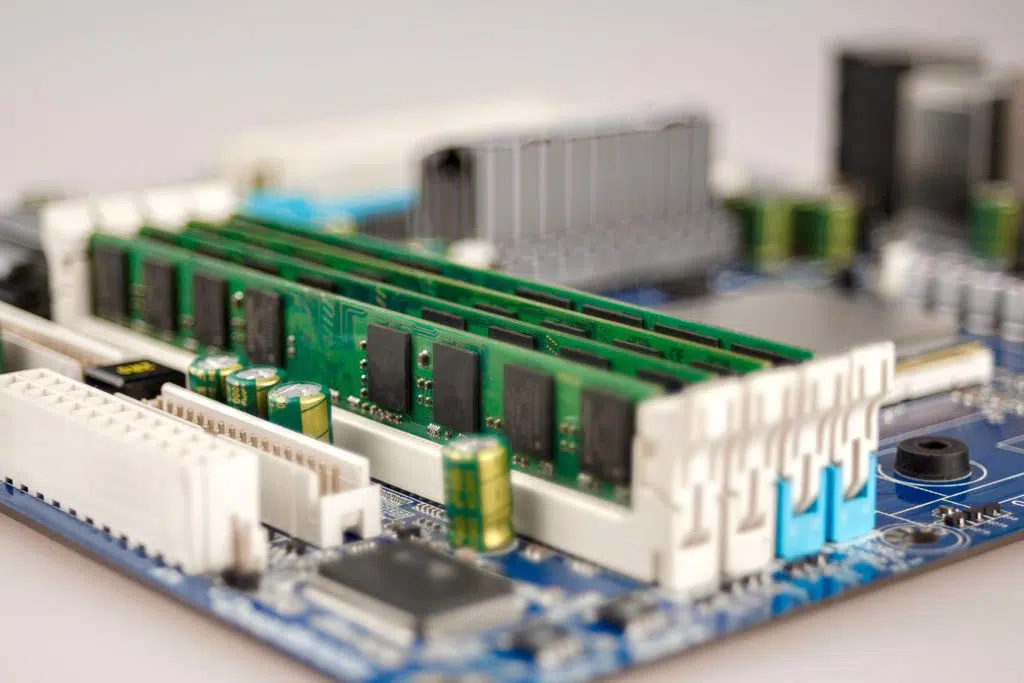Here’s everything about old computers affecting internet speed:
The short answer is yes, old computers affect internet speed.
The type and age of your devices can slow down your connection speed.
It’s because webpages today are incredibly more complex and slow to load because they require more and more RAM.
Thus, the only solution is to let go of your old PC.
So if you want to learn all about why old computers can affect your internet speed and what you can do about that, then you’re in the right place.
Let’s get started!

What Is the Connection Between Old Computers and Internet Speed?
Between theory and practice, many elements lead us to expect a certain connection speed.
This will depend not only on the installation of each user and your internet access subscription but also on various factors like your geolocation, the number of users, and so forth.
Every device is different.
Each is equipped with different chips managing certain standards and systems to connect to the network.
Remember, Wi-Fi is not cable.
So even identical brands and operating systems and related programs can play an influential role.
If you test internet speed on your smartphone or computer, you can notice a huge difference.
Nothing is constant.
Something that works can be degraded due to some problem be it hardware or software.
A simple problematic update can affect this.
So it is therefore always important to check several devices to see if the problem is not related to one of them in particular.
What Exactly Can Affect Internet Speed? (5 Things)
Several factors can affect the speed of your internet service.
Below is a list of the most common ones, along with a few tips to help you regain internet speed.
#1 Cable Connection Is Too Loose
Many connection issues can be solved by just making sure your cables are plugged in securely.
#2 Your Modem Needs to Be Reset
To reset your modem, insert the tip of a paperclip into the reset or restart hole on the back of the modem.
Press down on the paperclip for 3 seconds, then release it.
The modem will then attempt to resynchronize with the network, which can take up to 2 minutes.
#3 Too Many Devices Are Connected at the Same Time
Your internet access speed is distributed among all the devices (computers, smart TVs, phones, tablets, video game consoles, etc.) that you use.
To maximize your internet speed, disconnect some devices to have fewer connected to your wireless network.
#4 You Can’t Do Everything Online at the Same Time
Your speed will vary depending on the number of apps you have running, as well as the number of tasks you are doing online simultaneously.
Close a few infrequently used apps to improve speed.
#5 The Built Environment Around You Is Preventing a Faster Connection
Walls, doors, brick, insulated windows, concrete, and metals can all negatively impact the speed and quality of your connection.
If you can’t move your wall, you can move your modem by putting it in a more central location.
That can improve your internet experience.
What About Low Performing Devices?

The type and age of your devices can slow down your connection speed.
Try using newer or different devices.
No matter how carefully you follow all of this advice, if your computer is too old, it will no longer be able to support the size of current web pages.
The web has changed a lot over the years.
Webpages are incredibly more complex and slow to load because they require more and more RAM.
Even with good speed, each page will take a considerable amount of time to display.
The only solution: separate yourself from your old computer.
But Before You Do That…
Wait! Before you throw out your old buddy into the garbage, be sure to test out your connection on different devices to make sure that is the actual problem.
Many free tools allow you to test this online.
If the average speed expressed in megabits/second is consistently lower than what your service provider promises you, contact them to determine the reason.
If you can’t get an explanation from them, it might be time to look elsewhere.
There are many tips to improve the quality of your internet connection.
Still, you will always be limited by the maximum speed of your connection.
Still, even if your device is too old, you can improve your internet speed using the following advice.
What Can You Do About Your Old Computer Affecting Internet Speed? (2 Things)
#1 USB Adapters
A USB Wi-Fi adapter converts radio frequency signals into electronic data and passes them to a computer.
Generally, this work is accomplished by integrating Wi-Fi chips with integrated antennas.
Most USB Wi-Fi adapters for PCs are more like USB sticks or USB receivers for wireless keyboards and mice.
There are also larger Wi-Fi adapters that provide better range and signal strength, but they sacrifice portability.
There are several advantages of using a USB Wi-Fi adapter:
- No complicated installation is required. Even the least skillful of users can manage.
- Wi-Fi adapters are a better solution economically than the upgrade options available on the market. In addition, you do not need to call a technician to repair your device. Even better, you won’t need to buy a new computer while the one you have is still working perfectly.
- This accessory brings your old computer back to life by providing much faster speeds. Your old computer was surely slowing down the network with its low connection speed. By upgrading it to increase its speed, you free up part of your wireless network and allow other devices connected to the Internet to use a faster Wi-Fi signal.
AC adapters also feature beamforming technology that directly directs your router’s Wi-Fi signal to devices rather than diffusely over an entire area.
#2 Upgrade Your RAM

RAM is the abbreviation for Random Access Memory.
It is also called RAM or internal memory.
This is where your processor stores temporary files.
The more RAM there is, the more processes you can run at the same time.
In addition, the speed of the RAM partly determines the speed of your computer.
Once you’ve purchased the right amount of RAM, you can upgrade your memory.
Here’s how to add RAM to a desktop PC:
Disclaimer: As always, only do this if you know what you do. It’s, of course, at your own risk.
- Shut down your computer and wait for it to cool completely.
- Unplug all cords, cables, and accessories.
- Open your computer case. For instructions specific to your PC, see its manual. You will probably have to unscrew it. Remember the location of each screw (they are not necessarily all the same size and type).
- Open the casing of the PC to access the motherboard.
- Touch an unpainted metal surface of the case to discharge any static electricity your body may have accumulated. This will prevent you from damaging sensitive components of your computer.
- Find the RAM (you can consult the manufacturer’s manual).
- Gently pull out any RAM sticks there. If your computer uses clips to hold the clips in place, push them out. You should be able to remove the RAM module more easily.
- Carefully insert your new RAM sticks by placing the edge with the gold connectors into the RAM slot and pushing the strip out. Align the notch on the bar so that it fits into the slot. Hold your RAM sticks only by the sides, and never touch the gold connectors!
- Replace the computer case.
- Reconnect all cables and connectors.
Can you increase the RAM of a laptop?
Yes, as long as you haven’t reached the maximum RAM capacity of this system!
To find out how much RAM it can handle, you need to ask yourself the same questions as for a desktop computer.
That said, some laptops may not support upgrading RAM at all.
RAM sticks are sometimes soldered directly to the motherboard, and you cannot remove them yourself.
Check the Internet to see if your laptop’s RAM can be replaced.
If your computer can handle more RAM, here’s how to install it:
- Shut down your computer and let it cool down.
- Unplug all cords, cables, and accessories.
- Turn it over and place it on a flat surface.
- Open the bottom case, or remove the part that covers the RAM. These details may vary depending on your laptop type. If you need to unscrew the case, remember the location of the screws, as they are not necessarily all the same size.
- Touch an unpainted metal surface of the case to discharge any static electricity your body may have accumulated. This will protect the sensitive internal components of your laptop.
- Remove any RAM sticks by gently prying aside the clips that hold them in place. The RAM sticks should stick out a bit. You can then take them out of their slot.
- Grasp your RAM sticks only by the sides. Never touch the gold connectors or any of the components on the top of the strip!
- Align the notch on the bar so that it fits into the slot. Push it in until it is fully seated.
- Press down on the RAM module so that it sits flat on your laptop. The clips should snap back into place.
- Replace your laptop’s back case, turn the computer over, and then reconnect all of your cables and cords.

